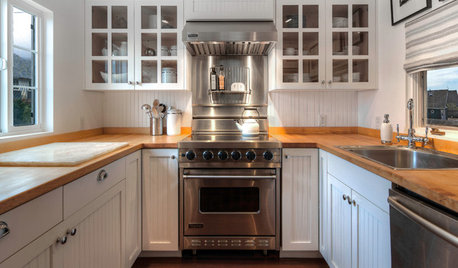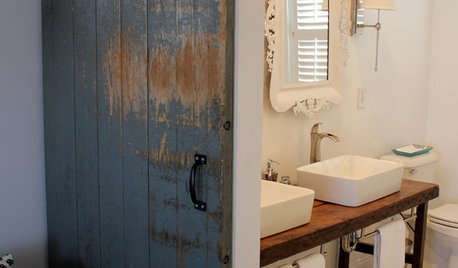Too Tight Unions
mgeca
10 years ago
Related Stories

HOUZZ TOURSHouzz Tour: Spanish Colonial–Modern Union in California
Styles, eras and objects from far-flung places happily coexist in this Spanish colonial home
Full Story
HOUZZ TOURSHouzz Tour: Industrial Floating Home in Seattle
A Seattle couple downsizes to a dreamy floating house on Lake Union, with a putting green, local artwork and an industrial aesthetic
Full Story
KITCHEN OF THE WEEKKitchen of the Week: Marrying Past and Present in Los Angeles
Something old, something new and all the rest make for a happy kitchen union in a tony L.A. neighborhood
Full Story
HOUZZ TOURSMy Houzz: Creative Moves Turn a Toronto Basement Into a Stylish Rental
See how two Canadian designers renovated their townhouse's lower level into a bright and modern one-bedroom apartment
Full Story
HOUZZ TOURSMy Houzz: Creative Open-Concept Home in Toronto
Three young designers give a neglected boardinghouse in Canada new life with an industrial-modern makeover
Full Story
ARCHITECTUREDesign Workshop: 9 Ways to Open a House to the Outdoors
Explore some of the best ideas in indoor-outdoor living — and how to make the transitions work for both home and landscape
Full Story
COTTAGE STYLEHouzz Tour: Charming Cottage Style on the Oregon Coast
Interior designer Barbara Hyde Evans pulls together her own beach home with a lot of creative repurposing and ingenuity
Full Story
DIY PROJECTSReinvent It: Salvage Savvy Keeps an Urban-Farmhouse Bath on Budget
See how resourceful shopping and repurposing gave a homeowner the new bathroom she wanted at the right price
Full Story
REMODELING GUIDES5 Ways to Protect Yourself When Buying a Fixer-Upper
Hidden hazards can derail your dream of scoring a great deal. Before you plunk down any cash, sit down with this
Full Story
KITCHEN DESIGNThe Return of the High-Back Farmhouse Sink
See why this charming and practical sink style is at home in the kitchen and beyond
Full StoryMore Discussions







Mike56
mgecaOriginal Author
Related Professionals
Maple Valley Landscape Architects & Landscape Designers · New Bedford Landscape Architects & Landscape Designers · Piqua Landscape Architects & Landscape Designers · South Elgin Landscape Architects & Landscape Designers · Newcastle Landscape Architects & Landscape Designers · Brentwood Landscape Contractors · Matthews Landscape Contractors · Barrington Landscape Contractors · Cudahy Landscape Contractors · Hilton Head Island Landscape Contractors · Miller Place Landscape Contractors · Parker Landscape Contractors · San Rafael Landscape Contractors · Wanaque Landscape Contractors · Golden Valley Landscape ContractorsMike56
sleeplessinftwayne
koidog10
mgecaOriginal Author
mgecaOriginal Author
mgecaOriginal Author
lmjk1221
mgecaOriginal Author
lmjk1221
mgecaOriginal Author
lmjk1221
mgecaOriginal Author
lmjk1221
finnpond
lmjk1221
mgecaOriginal Author